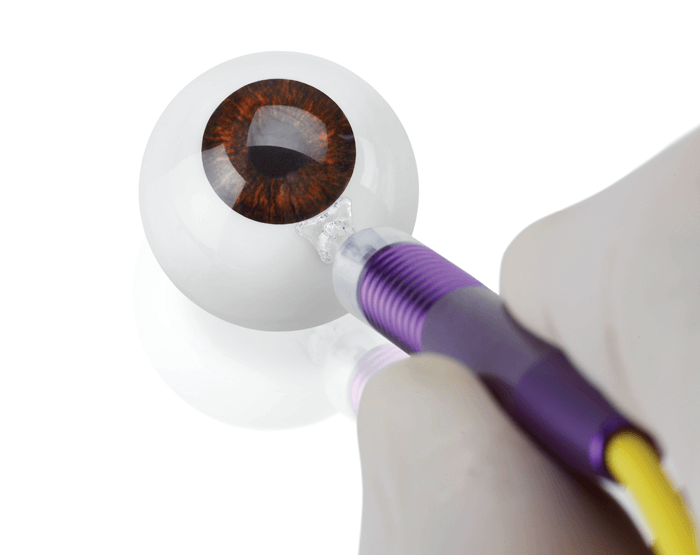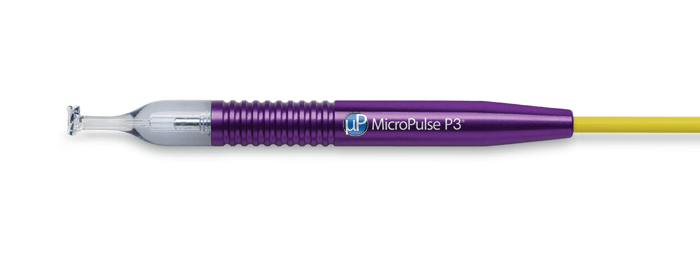
Tomas M. Grippo, MD, Director and Founder, Grippo Glaucoma & Cataract Center, Buenos Aires, Argentina, serves as co-chair of the International MicroPulse TLT Consensus Panel, and has plenty of experience using MicroPulse Transscleral Laser Therapy (TLT). Here, we ask him about his experience using the therapy in the treatment of glaucoma and about the findings of the international consensus panel of 10 glaucoma experts, who discussed best practices for MicroPulse TLT.
Firstly, what is MicroPulse TLT?
MicroPulse TLT is a unique and non-incisional surgical option to manage glaucoma patients. It’s a titratable procedure that can be repeated without limiting the use of other therapies.
So how does this differ from conventional continuous-wave transscleral cyclophotocoagulation?
There is greater thermal control and lower temperature targets, which both contribute to a lower risk of complications compared with transscleral continuous- wave cyclophotocoagulation (CW-TSCPC).
Who are the ideal patients for MicroPulse TLT?
Due to its favorable safety profile, it can be considered as a therapeutic option in any part of the glaucoma treatment algorithm after medications and trabeculoplasty have failed to control the disease. It’s ideal for patients who either aren’t good candidates for, or don’t wish to undergo, incisional or filtering glaucoma surgery but also for those patients who have had prior incisional or filtering glaucoma surgery who have failed to successfully control IOP. It’s also an option for patients on maximum tolerated medical therapy, including acetazolamide, in order to stop the acetozolamide.
And what treatment parameters does the panel recommend for the procedure?
As a starting point, when using the Cyclo G6 laser and revised MicroPulse P3 delivery device, the panel recommends 2500 mW of power with a 31.3 percent duty cycle, with four or five sweeps for 20 seconds in each hemisphere. When a more aggressive treatment is desired, the panel recommends an escalation of approximately 25 percent in energy delivery, which can be achieved by either increasing the power, slowing the sweep velocity, or increasing total treatment time.
Can you share a few treatment/technique pearls of wisdom?
Firstly, it’s always important to use a transparent and optically neutral coupling agent, like lidocaine gel, for more effective power transmission. Also, place the footplate of the revised MicroPulse P3 Probe with its bunny ears at the limbus, or err slightly posterior of the limbus if it is not clearly defined. Finally, gently compress the conjunctiva for an optimal laser transmission during the sweeps, and exclude the positions at 3 and 9 o’clock.
What are the expected outcomes?
The literature shows a pressure reduction of between 30 and 50 percent using the original MicroPulse P3 probe, which enabled patients to stop oral acetazolamide. At the 2022 AGS meeting, Leticia Checo and colleagues presented a study using the revised probe, which showed – using settings near the consensus-recommended settings – an average pressure reduction of 44 percent achieved at the 12-month follow-up. The consensus panel agrees that when using the recommended starting settings with the revised probe, an expected pressure reduction would be closer to between 25 and 35 percent.

Can these patients be retreated?
Absolutely. The possibility to retreat is one of the benefits of this procedure. In the literature, two to three retreatments have been reported in several series.
Should physicians be concerned about potential side effects?
Most articles in the literature conclude that MicroPulse TLT is safe and effective. But, as with every glaucoma procedure, there are potential side effects. Now that we have a better understanding of dosimetry, surgical technique, patient selection, and can use the revised probe for a more posterior and stable treatment, many of these side effects can be minimized or prevented altogether.
Finally, what does the future of MicroPulse TLT look like to you?
The MicroPulse TLT technique - and our understanding of it – have evolved significantly since it was first used in 2015. We are just scratching the surface of what we can achieve with this versatile treatment. I consider it an indispensable and extremely valuable tool when taking care of my glaucoma patients.

